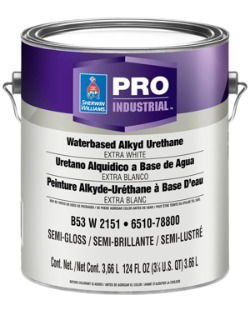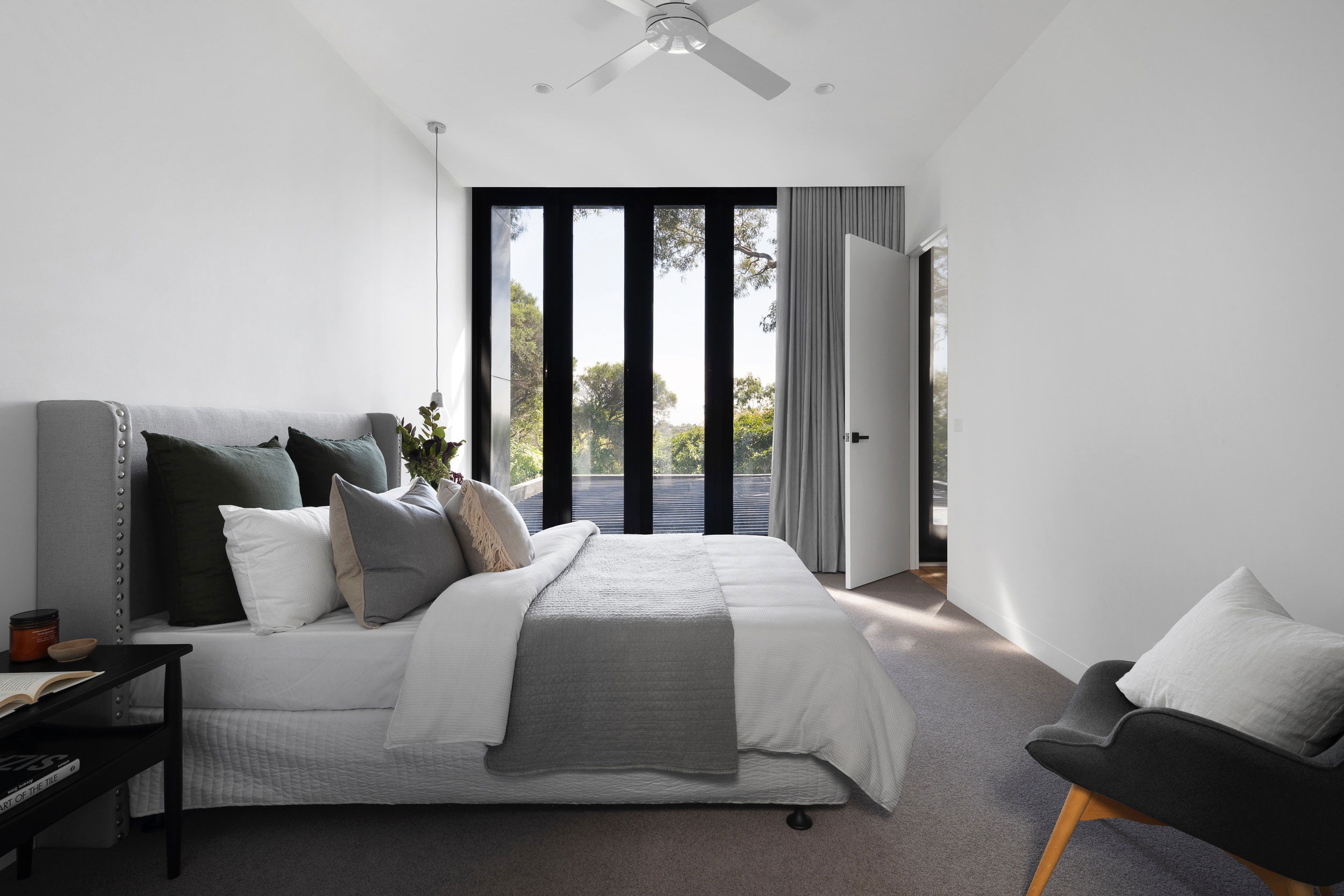Understanding Water-Based Paints

Key Features:
- What is a water based paint?
- How do you paint water based?
- What are the disadvantages of water based paint?
- What is the difference between acrylic and water based paint?
The Growing Appeal of Water-Based Paints
In recent years, water-based paints have surged in popularity among both DIY enthusiasts and professional painters. This shift is driven largely by growing environmental awareness and the desire for easier, safer painting solutions. Water-based paints offer a less toxic alternative to traditional oil-based paints, with lower volatile organic compounds (VOCs) that contribute to better indoor air quality and a reduced environmental footprint.
Overview of Water-Based Paint
Water-based paint, commonly recognized for its user-friendly nature, employs water as the primary solvent. This type of paint has become increasingly prevalent in both home renovations and commercial projects, where quick drying times and ease of cleanup are highly valued.
What is Water-Based Paint?
Definition and Composition
Water-based paint, as the name suggests, is a type of paint in which water is used as the solvent to disperse the pigment and binder. Unlike oil-based paints that use chemicals like turpentine or white spirit, water-based paints rely on water to carry and distribute the paint's components, which significantly reduces harmful emissions.
Types of Water-Based Paints
Several types of water-based paints are popular in the market, each suited for specific applications:
- Acrylic Paints: Known for their excellent color retention and durability, acrylic paints are a favorite for both indoor and outdoor applications. They offer a robust finish that resists fading and weathering.
- Latex Paints: Often used for interior walls and ceilings, latex paints are prized for their ease of application and flexibility. They are less susceptible to cracking and provide a breathable coat, which is ideal for living spaces.
- Vinyl Acrylics: Commonly used for budget-conscious projects, vinyl acrylics provide good coverage and adhesion at a lower cost than 100% acrylic paints.
Usage Scenarios
Water-based paints are versatile, making them suitable for a variety of painting projects:
- Interior Walls and Ceilings: Due to their low odor and quick drying properties, water-based paints are ideal for interior spaces. They minimize the disruption to daily life and are safer for enclosed environments.
- Exteriors: Water-based acrylic paints are particularly effective for exterior surfaces due to their durability and resistance to weather conditions.
- Trim and Woodwork: Water-based paints are also effective for trim and woodwork, providing a clean finish that doesn’t yellow over time, unlike some oil-based alternatives.
How to Paint with Water-Based Paint
Painting with water-based paint not only helps achieve a beautiful finish but also contributes to a healthier environment. To ensure the best results, it's crucial to properly prepare the surface, apply the paint correctly, and understand the drying times. Here’s a comprehensive guide:
Surface Preparation
Proper preparation is key to achieving a professional-quality finish. Here’s how to prepare different surfaces:
- Wood: Start by sanding the wood to smooth out any imperfections and ensure an even surface. Remove all dust with a tack cloth or a damp rag. Apply a water-based primer to help the paint adhere better and to reduce the absorption of paint, especially in porous woods.
- Drywall: Ensure the drywall is clean and free from dust. Fill in any holes or cracks with drywall compound and sand smooth once dry. A primer is recommended for new drywall as it seals the surface and provides a uniform base for the paint.
- Metal: Clean the metal surface thoroughly to remove any rust, grease, or dirt. Use a wire brush or sandpaper to roughen up glossy surfaces for better paint adhesion. Apply a rust-inhibiting primer before painting to prevent corrosion.
Application Techniques
Applying water-based paint is straightforward if you have the right tools and technique:
- Tools Needed:
- Brushes: Use synthetic bristle brushes for water-based paint as they don’t absorb water like natural bristles, which can cause them to lose shape.
- Rollers: Choose rollers with a smooth or medium nap. The smoother the roller, the finer the finish on the painted surface.
- Sprayers: Airless sprayers or HVLP (High Volume Low Pressure) sprayers are effective for larger areas or for achieving a smooth finish.
- Step-by-Step Application:
- Begin by mixing your paint thoroughly to ensure any settled pigments are well incorporated.
- Start with the edges and corners of the surface using a brush. This process is called “cutting in.”
- For larger surfaces, use a roller. Dip the roller into the paint, ensuring it’s evenly coated. Roll the paint onto the surface in a ‘W’ pattern, then fill in the gaps with parallel strokes to ensure even coverage.
- If using a sprayer, hold it about 6-8 inches from the surface and spray in a steady back-and-forth motion, overlapping each stroke slightly.
Drying Times and Conditions
- Drying Times: Water-based paints typically dry faster than oil-based paints. Most water-based paints will be touch-dry within an hour and can be recoated after four hours, although this can vary based on the specific product and conditions.
- Environmental Factors:
- Temperature and Humidity: Paint dries best at temperatures between 50°F and 85°F with low humidity. High humidity or cold weather can slow the drying process.
- Ventilation: Good airflow helps water-based paint dry faster and more evenly. Ensure your space is well-ventilated during painting and as it dries.
In Our Experience:
"The partnership between Sherwin-Williams and Lowe's brings the renowned quality of Sherwin-Williams paints into the accessible environment of Lowe's, catering to a broader audience with a focus on both DIY enthusiasts and professionals. Lowe's offers specific lines like the HGTV Home by Sherwin-Williams, providing paints tailored for various needs including durability and aesthetic appeal. These products are slightly modified in terms of formulation to optimize for retail consumers, focusing on ease of application and drying time, which aligns with the DIY market. Despite the lower pricing at Lowe’s, which is designed to attract a more cost-conscious customer base, the core quality and performance of the paints are maintained, offering a blend of affordability and quality."
Disadvantages of Water-Based Paint
While water-based paints offer numerous benefits such as lower VOC emissions and easier cleanup, they also come with certain drawbacks compared to their oil-based counterparts. Here's an exploration of some of the key disadvantages:
Durability Concerns
- Comparison to Oil-Based Paints: Water-based paints generally do not match the durability and resilience of oil-based paints. Oil-based products tend to form a harder, more durable film once cured, which is resistant to wear and tear. This makes them particularly suitable for high-traffic areas or surfaces that endure a lot of handling or cleaning.
- Longevity: Water-based paints may not last as long as oil-based paints, especially in outdoor applications or in environments with high humidity or direct sunlight. The binder in water-based paints can degrade faster under harsh conditions, leading to quicker fading, chalking, or peeling.
Coverage Issues
- Opacity and Multiple Coats: One common issue with water-based paints is their opacity. They often require more coats to achieve the same level of coverage as oil-based paints, particularly when painting over dark colors or stained surfaces. This can increase the time and cost of a project, as more product and labor are needed to achieve the desired finish.
- Consistency Across Coats: Achieving a uniform appearance can be more challenging with water-based paints due to their rapid drying times. This can sometimes result in streaks or lap marks, especially if not applied efficiently.
Environmental Impact
- Less Polluting, But Not Impact-Free: While water-based paints are celebrated for their reduced environmental impact—primarily due to lower VOC content—they still pose some ecological concerns. The production, packaging, and disposal of water-based paints involve energy consumption and waste generation that can affect the environment.
- Chemical Additives: Despite being less harmful than oil-based paints, water-based options still contain various chemical additives such as dispersants, stabilizers, and sometimes biocides to prevent mold and bacteria growth. These chemicals can have environmental implications, particularly when washed into waterways during cleaning or disposed of improperly.
Acrylic vs. Water-Based Paint: Understanding the Difference
When selecting paint, understanding the nuances between different types can help you make an informed choice that meets your project's needs. Acrylic and water-based paints are popular options, each with unique properties and applications. Here’s a closer look at their differences and how to choose between them.
Composition Differences
Acrylic Paints:
- Composition: Acrylic paints are composed of pigments suspended in an acrylic polymer emulsion. They are water-based in the sense that they use water as a solvent to disperse the resin, but the resin itself is acrylic, which offers a flexible and durable film when dried.
- Chemical Properties: Acrylics form a hard plastic-like layer when dried, which is highly resistant to weathering. The polymer base also ensures that the paint remains flexible, reducing the risk of cracking.
Other Water-Based Paints:
- Composition: Other types of water-based paints, such as latex paint, typically use a vinyl acetate or rubber-based polymer. These paints also use water as a solvent but differ in the binders and formulations used.
- Chemical Properties: Compared to acrylics, other water-based paints may not form as durable a coating and can be more susceptible to the elements, though they are easier to work with and clean up.
Performance Comparison
Acrylic Paints:
- Color Retention: Acrylic paints are superior in terms of color retention. They are less likely to fade when exposed to sunlight due to their UV-resistant properties.
- Drying Time: They generally have a faster drying time than oil-based paints but may dry slower than other water-based formulas like latex, allowing for smoother blending and working.
- Environmental Resistance: Excellent resistance to weathering makes acrylics ideal for exterior applications, including on surfaces exposed to harsh conditions.
Other Water-Based Paints:
- Color Retention: Can be less effective at retaining color over long periods, especially in direct sunlight.
- Drying Time: Typically faster than acrylics, which can be a double-edged sword; it's beneficial for quick jobs but can be a drawback for projects requiring blending.
- Environmental Resistance: Generally less resistant to environmental factors than acrylics, making them more suitable for interior use.
Choosing Between Them
Scenario-Based Recommendations:
- Exterior Projects: Acrylic paints are often the better choice for exterior projects due to their durability and resistance to weathering. Ideal for surfaces that will be exposed to harsh conditions, such as outdoor furniture, exterior walls, and fences.
- Interior Decor: For interior walls where moisture and heavy wear are not as much of a concern, other water-based paints like latex are more than sufficient. They offer ease of use and a wider variety of finishes suitable for indoor aesthetics.
- Artistic Uses: Acrylic paints are preferred in the arts for their versatility and excellent color saturation. They work well on a variety of surfaces, including canvas, wood, and fabric.
Embracing the Versatility of Water-Based Paints
Throughout our discussion, we've explored the unique characteristics, benefits, and applications of water-based paints, emphasizing their versatility and suitability for a diverse range of painting projects. From acrylics to latex and other water-based variants, each type offers specific advantages that cater to different needs and scenarios.
Key Points Recap
- Composition and Performance: Water-based paints, including acrylics, are celebrated for their minimal environmental impact compared to oil-based alternatives. Acrylic paints, with their durable acrylic polymer emulsion, offer enhanced color retention and resistance to environmental factors, making them ideal for both interior and exterior applications.
- Environmental and Health Benefits: Water-based paints generally have lower levels of volatile organic compounds (VOCs), making them a safer choice for indoor environments. This feature is crucial for maintaining healthier indoor air quality and reducing the overall environmental footprint of painting projects.
- Suitability for Various Applications: Whether you're undertaking a detailed artistic endeavor, refreshing interior walls, or protecting exterior surfaces against harsh weather conditions, there's a water-based paint that meets the challenge. Acrylic paints are particularly versatile, suitable for a wide array of surfaces and providing long-lasting results.
Action
As you plan your next painting project, take the time to consider the specific requirements of your environment and the outcomes you wish to achieve. Evaluate the surfaces to be painted, the exposure to environmental elements, and your health and safety preferences. Choose a water-based paint that not only aligns with your aesthetic goals but also upholds your environmental and health standards.For those seeking a paint solution that combines performance with sustainability, water-based paints offer a compelling choice. Visit your local paint store to explore the options available and speak with painting experts who can guide you to the perfect product for your needs. Embrace the versatility and benefits of water-based paints to transform your spaces safely and beautifully.
Do You Have Questions? Give Us A Call With Any & All! 503-389-5758
-
People Also Ask:
What are the best conditions for applying water-based paint?
Water-based paint is best applied in conditions that are not too hot or too cold, typically between 50°F and 85°F with humidity levels below 70%. It's important that the area is well-ventilated to aid in the drying process. Overly humid or excessively dry conditions can affect the drying time and finish of the paint.
Can water-based paint be used over oil-based primer?
Yes, water-based paint can be used over oil-based primer, but the primer must be fully cured and the surface properly prepared before application. It’s crucial to ensure that the oil-based primer is compatible with water-based paint and to lightly sand the primed surface to provide a better grip for the topcoat.
How long should I wait between coats of water-based paint?
Generally, it's recommended to wait about 2 to 4 hours between coats of water-based paint. However, this can vary based on humidity, temperature, and ventilation in the painting environment. It's important to make sure the first coat is completely dry to the touch and no longer tacky before applying a second coat.
-
SUBSCRIBE TO OUR BLOG: Stay informed with the latest in Painting and DIY projects by subscribing to Lightmen Painting. Get insights, tips, and more delivered straight to your inbox. We would also love to know what you would like to read about, leave thoughts on where we should go next. Interests, Topics, Ideas, all are welcome.
If your in the Portland, Or. area and need advice or a free no obligation estimate call us at 503-389-5758 or email scheduling@lightmenpainting.com
Local Shout Out:
Celebrating the Willamette River: A Lifeline of Natural Beauty and Recreation
From the team at Lightmen Painting, we pay tribute to the Willamette River, an essential natural resource that flows through the heart of Oregon, including the vibrant city of Portland. Just as we are committed to excellence in our painting services, the Willamette River is central to the region's ecological health, providing water for communities and habitats for wildlife. It is a hub for recreational activities like kayaking, fishing, and riverside picnics, enriching the lives of residents and enhancing the natural beauty of our surroundings, much like our aim to enrich and beautify through our professional painting services.
Thanks for stopping by Lightmen Daily! Stay tuned for more practical tips and expert advice on making your painting projects flawless, from wall to floor!
Definitions
- Water-Based Paint: A type of paint in which water is used as the solvent to disperse the pigment and binder. It offers a less toxic alternative to traditional oil-based paints, with lower volatile organic compounds (VOCs) that contribute to better indoor air quality and a reduced environmental footprint.
- Surface Preparation: The process of preparing the surface to be painted, ensuring it is clean, smooth, and free from imperfections. This may include sanding wood, filling in holes or cracks in drywall, or cleaning metal surfaces.
- Application Techniques: Various methods used to apply water-based paint to surfaces, including brushes, rollers, and sprayers. Proper application techniques ensure even coverage and a professional-quality finish.
- Drying Times and Conditions: The time it takes for water-based paint to dry and the environmental factors that can affect drying, such as temperature, humidity, and ventilation. Proper drying conditions are crucial for achieving optimal results.
- Disadvantages of Water-Based Paint: Drawbacks associated with water-based paint compared to oil-based paints, including potentially lower durability, coverage issues, and environmental concerns. Despite their advantages, water-based paints may have limitations that should be considered before use.
- Acrylic Paints: A type of water-based paint composed of pigments suspended in an acrylic polymer emulsion. Acrylic paints offer enhanced durability and color retention, making them suitable for both interior and exterior applications.
Lightmen Painting Serving: Portland, Tigard, Lake Oswego, Tualatin, West Linn, Milwaukie, Sherwood, Happy Valley, Oregon City, Beaverton, Hillsboro, Gresham


